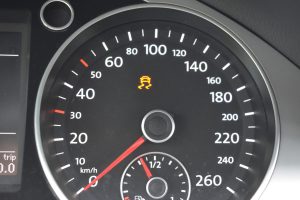When it comes to modern automotive safety and ride quality, two crucial systems work in harmony: shock absorbers and electronic stability systems. While many drivers think of shocks as comfort-focused and stability systems as safety tech, the reality is that these systems interact constantly to provide optimal control, especially in emergency or high-speed situations.
This article will explore how shock absorbers and electronic stability systems (like ESC, ABS, and TCS) collaborate to improve driving dynamics. We’ll break down their roles, explain how they’re linked, and offer insights into maintenance — including where to buy Shock Absorbers online.
What Are Shock Absorbers?
Shock absorbers, or dampers, are part of your suspension system. Their primary function is to:
-
Control suspension motion by converting kinetic energy into heat via hydraulic fluid
-
Reduce vehicle bounce after hitting bumps or potholes
-
Maintain tire contact with the road, ensuring traction
Without properly functioning shocks, your car would bounce uncontrollably and struggle to maintain grip, especially during turns or sudden stops.
What Are Electronic Stability Systems?

Modern vehicles are equipped with various electronic driver-assist technologies. The three main systems involved in vehicle stability are:
| System | Function |
|---|---|
| ESC (Electronic Stability Control) | Prevents skidding by adjusting engine power and braking individual wheels |
| ABS (Anti-lock Braking System) | Prevents wheel lock-up during emergency braking |
| TCS (Traction Control System) | Reduces wheel spin by adjusting throttle or braking |
These systems rely on sensors to detect changes in wheel speed, yaw rate, steering angle, and lateral acceleration.
How They Work Together
Shock absorbers and stability systems work as a dynamic team to ensure you maintain control, no matter the road conditions.
Key Interactions:
| Driving Scenario | Shock Absorbers’ Role | Stability System Reaction |
|---|---|---|
| Hard braking | Keep tires grounded for ABS | ABS modulates brake force |
| Sudden turn | Reduce body roll | ESC applies selective braking |
| Wet/icy acceleration | Maintain contact over slippery surfaces | TCS reduces throttle/brakes slipping wheels |
| Hitting potholes or bumps | Absorb vertical movement | ESC adjusts torque/braking if needed |
Shock absorbers provide the mechanical stability, while electronic systems provide real-time intervention based on sensor feedback. If shocks are worn out, the stability system can’t perform properly — it may intervene too late or too aggressively, leading to handling issues.
Adaptive Suspension & Electronic Control
Advanced systems now electronically adjust shock absorber stiffness in real time. These include:
| System Type | Description |
|---|---|
| Active Dampers | Adjust fluid flow inside shocks based on sensor input |
| Adaptive Suspension | Switch between comfort/sport modes (manually or auto) |
| Magnetorheological Dampers | Use magnetic fluid to instantly change damping force |
These systems are tightly integrated with stability software. For example, during aggressive cornering, shocks may stiffen to reduce roll while ESC limits torque for enhanced control.
Signs of Shock Absorber and ESC Issues
| Symptom | Possible Cause | Action |
|---|---|---|
| Poor handling on wet roads | Worn shocks / failing ESC sensors | Inspect both suspension & ESC |
| Car nose-dives when braking | Front shock absorber wear | Replace shocks |
| ESC light on dashboard | Sensor or module malfunction | Scan codes / check wiring |
| Excessive bouncing after bumps | Shock absorber failure | Replace shocks |
| Traction issues in rain/snow | Weak shocks or faulty TCS | Test both systems |
Maintenance Recommendations
To ensure both systems function at their best:
-
Inspect shocks every 60,000–100,000 km
-
Replace all four shocks in pairs or sets
-
Check ESC system for error codes during regular diagnostics
-
Use OEM-quality parts for compatibility
-
Maintain correct tire pressure to avoid false ESC triggers
How Worn Shocks Affect ESC Performance

When shocks are worn out:
-
Tires lose consistent road contact
-
ESC sensors misinterpret vehicle movement
-
Interventions become delayed or exaggerated
This can lead to increased stopping distance, loss of cornering control, and unnecessary ESC activation even during normal driving.
Where to Buy Shock Absorbers
Upgrading or replacing shock absorbers? Don’t let worn suspension compromise your vehicle’s safety systems.
buy Shock Absorbers online — explore a wide range of high-quality shocks for all vehicle types with fast delivery and guaranteed fit.
Summary Table: Shock Absorbers vs. Stability Systems
| Feature | Shock Absorbers | Electronic Stability Systems |
|---|---|---|
| Type | Mechanical/hydraulic | Electronic/software-controlled |
| Core Function | Control vertical motion | Manage horizontal/yaw movement |
| Key Benefit | Ride comfort, tire contact | Skid, spin, and traction correction |
| Works With | Springs, struts, suspension | ABS, TCS, yaw sensors, ECU |
| Failure Impact | Bounce, poor traction | Loss of steering/braking stability |
Final Thoughts
While shock absorbers and electronic stability systems serve different technical roles, their cooperation is critical to modern vehicle performance and safety. Together, they create a well-balanced system that:
-
Absorbs shocks and bumps
-
Maintains tire grip
-
Prevents oversteer and understeer
-
Enhances driver confidence in all conditions
By keeping both your mechanical suspension and electronic controls in good condition, you ensure your vehicle performs exactly how it was engineered — reliably, comfortably, and safely.
Don’t wait for warning signs to appear. Replace worn shocks on time and maintain your electronic systems to keep your car under full control in any situation.
Need new shocks? Start here — buy Shock Absorbers online.